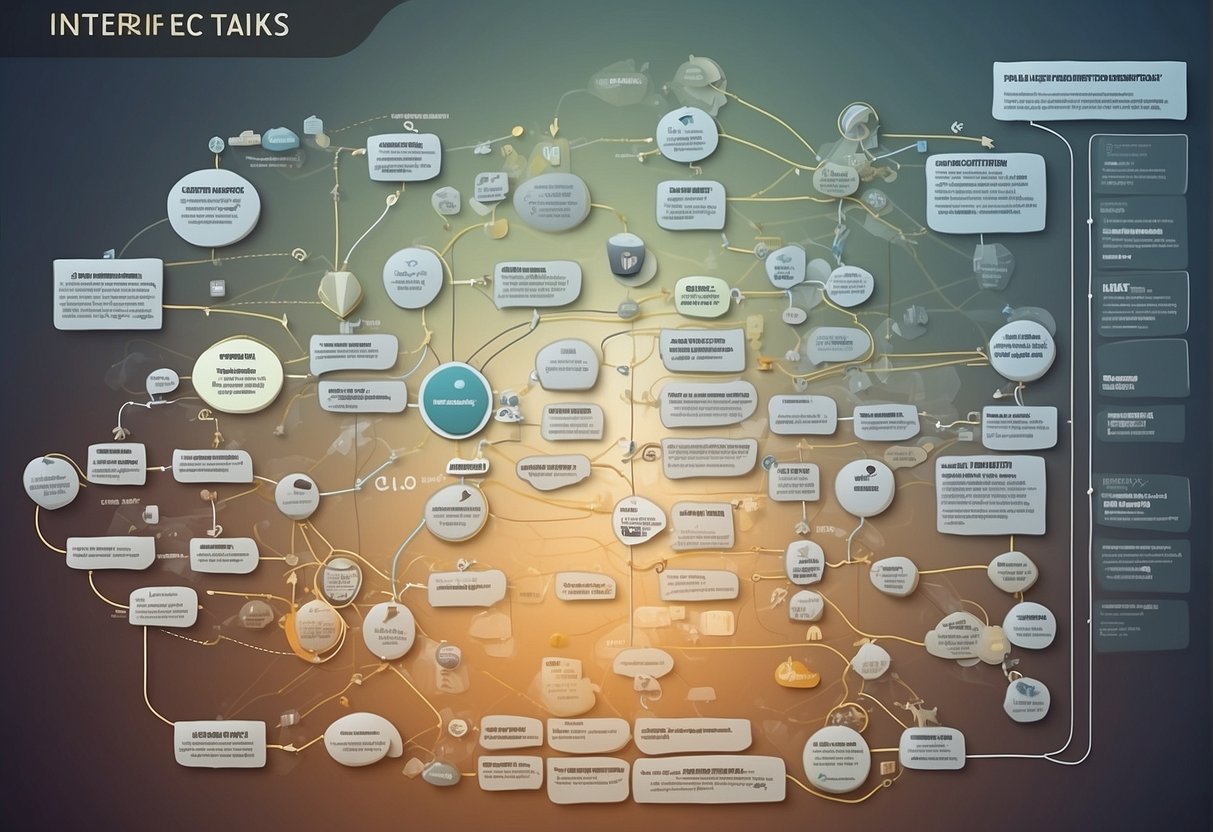Agile methodology represents a paradigm shift in project management, offering a significant departure from the traditional waterfall approach. By adopting Agile, you can expect enhanced efficiency and flexibility in your projects. Agile’s iterative process emphasizes adaptability, enabling you to respond to changes quickly rather than following a fixed path. This approach prioritizes customer collaboration and satisfaction, ensuring that the end product more accurately reflects user needs and market realities.
Implementing Agile in your projects involves organizing tasks into short work cycles known as sprints, which typically last from one to four weeks. During these sprints, cross-functional teams collaborate to produce increments of the final product. This allows you to review and assess progress regularly, making it possible to adjust the course as needed without significant setbacks. Flexibility is at the heart of Agile, so whether you’re developing software or managing a complex project with many moving parts, Agile is designed to accommodate and thrive in the face of change.
Agile methodology doesn’t just streamline processes; it also cultivates an environment where communication and team collaboration are paramount. You will find that this emphasis on teamwork helps to surface issues more quickly, allowing for swift resolutions. In turn, projects move forward without the burdensome delays that often accompany more rigid management structures. With Agile, your team’s morale can also improve, as members feel more involved and empowered in the project’s direction and outcomes.
Foundations of Agile Methodology
Agile methodology revolves around iterative development and flexibility. You’ll find its roots in the Agile Manifesto and the twelve principles that guide the Agile process.
Agile Manifesto and Core Values
The Agile Manifesto is your foundation for understanding Agile methodology. It was formulated in 2001 when a group of software developers concluded that traditional project management methods were too rigid. The Manifesto emphasizes four core values:
- Individuals and interactions over processes and tools
- Working software over comprehensive documentation
- Customer collaboration over contract negotiation
- Responding to change over following a plan
It’s important for you to recognize that while there is value in the items on the right, Agile practitioners value the items on the left more.
Principles of Agile
Agile is underpinned by twelve key principles that translate its values into practical actions:
- Satisfy the customer through early and continuous delivery of valuable software.
- Welcome changing requirements, even late in development. Agile processes harness change for the customer’s competitive advantage.
- Deliver working software frequently, with a preference for a shorter timescale.
- Businesspeople and developers must work together daily throughout the project.
- Build projects around motivated individuals. Give them the environment and support they need, and trust them to get the job done.
- The most efficient and effective method of conveying information to and within a development team is face-to-face conversation.
- Working software is the primary measure of progress.
- Agile processes promote sustainable development. The sponsors, developers, and users should be able to maintain a constant pace indefinitely.
- Continuous attention to technical excellence and good design enhances agility.
- Simplicity—the art of maximizing the amount of work not done—is essential.
- The best architectures, requirements, and designs emerge from self-organizing teams.
- At regular intervals, the team reflects on how to become more effective, then tunes and adjusts its behavior accordingly.
By embracing these principles, you ensure that agility is at the heart of your project’s approach, allowing for both efficiency and flexibility in the face of change.
Implementing Agile Processes
When you transition to Agile, understanding roles, assembling the right team, and leveraging effective tools and techniques are crucial for a successful implementation.
Roles and Responsibilities
In Agile, roles are pivotal in fostering collaboration and communication. The key roles include:
- Product Owner: Defines product vision and prioritizes the backlog.
- Scrum Master: Facilitates the process, addresses impediments, and ensures Agile principles are followed.
- Development Team: Cross-functional group that works on delivering potentially shippable increments.
These roles work together in a self-organizing manner to enhance teamwork and drive the project forward.
Setting up an Agile Team
To set up an Agile team effectively, follow these steps:
- Identify cross-functional skills needed for the project.
- Select team members who are self-motivated and adaptable.
- Ensure the team size allows for effective collaboration (typically 5-9 members).
Remember, effective Agile teams manage their work autonomously while maintaining clear and constant communication.
Agile Tools and Techniques
In Agile, tools and techniques facilitate teamwork and tracking progress:
- Kanban boards for workflow visualization.
- Daily stand-ups to sync up on tasks.
- Sprints/Iterations for time-boxed delivery cycles.
- Retrospectives for continuous improvement.
Embrace tools that encourage collaboration and transparency, such as JIRA or Trello, to maximize your team’s efficiency and adaptability.
Agile Practices for Project Success
Adopting Agile practices is integral for steering your project toward success through enhanced efficiency and flexibility. By implementing effective sprint planning and execution, integrating continuous delivery, and establishing robust feedback loops, you set the stage for continuous improvement and adaptability.
Sprint Planning and Execution
Your sprint planning should define a clear scope and goals for each sprint, typically lasting two to four weeks. During these sprints, incremental development is key to progress. Begin with a sprint planning meeting, where your team prioritizes tasks from the product backlog and commits to deliverables that align with your project goals.
Execution:
- Hold daily stand-up meetings to track progress and address roadblocks.
- Use a task board to monitor story points and task completion.
- Review and adapt your sprint backlog as necessary to maintain focus on deliverables.
Continuous Integration and Delivery
Continuous integration (CI) involves regularly merging code changes into a shared repository, where automated builds and tests run. This encourages early detection of integration issues and aligns with incremental development practices.
Delivery involves automating the deployment process so that new changes can be released to the end-users frequently and reliably.
CI/CD Pipeline Elements:
- Code repository: Where your source code is stored and versioned.
- Automated tests: To ensure quality and functionality with each integration.
- Deployment tools: To streamline and automate the release to production.
Feedback Loops and Improvement
Feedback is the lifeblood of continuous improvement. Short sprints, coupled with frequent reviews and retrospectives, allow your team to gather user and stakeholder feedback swiftly and adapt subsequent iterations accordingly.
Action Points:
- Conduct sprint reviews to showcase the increment to stakeholders.
- Facilitate sprint retrospectives to reflect on processes and performance.
- Amend your product backlog based on feedback to reflect user needs and preferences.
Through regular feedback loops, your team remains aligned with user expectations, fostering a culture of adaptability and constant enhancement of both the product and your Agile methods.
Adapting to Change in Agile Projects
Agility in project management hinges on embracing change as a natural and beneficial aspect of the development process. Ensuring that your project remains flexible and responsive to changing requirements is vital for delivering a customer-centric product that aligns with market demands.
Managing Changing Requirements
When managing changing requirements, it’s essential to have a structured yet adaptable workflow. You can achieve this through iterative and incremental development cycles, allowing for regular assessment and adjustment. Here’s how you can effectively manage changes:
- Prioritize changes: Evaluate the impact of each change request by considering the value it adds and its alignment with the project’s goals.
- Update backlog regularly: Your project backlog should be dynamic, reflecting any changes in requirements.
- Transparent communication: Keep your stakeholders informed about changes and their implications for timelines and costs.
Leverage tools such as burndown charts to track progress and visualize adjustments in real-time.
Fostering a Culture of Adaptation
Cultivating a culture that supports adaptation is crucial. Below are strategies to encourage such a culture within your team:
- Embrace a learning mindset: Encourage team members to view changes as opportunities to learn and improve the product.
- Empower decision-making: Equip your team with the ability to make swift decisions in response to new information.
- Recognize flexibility: Reward team behaviors that demonstrate adaptability in the face of change.
In this environment, your team becomes more resilient and better positioned to pivot effectively when confronted with new or evolving project demands.
Agile Across Different Industries
Agile methodology has transcended its software development roots, proving its worth across a spectrum of industries. The principles of iterative development, active stakeholder collaboration, and ability to respond to change are fostering successes in fields ranging from manufacturing to consulting.
Agile in Software Development
In software development, Agile’s iterative approach allows you to continuously deliver small chunks of working software, ensuring rapid feedback and adaptability. Your emphasis on customer collaboration ensures that the end product aligns with user needs, while frequent releases facilitate early detection of issues. Consider a Kanban board, a key Agile tool, to visualize your workflow:
| To Do | In Progress | Testing | Done |
|---|---|---|---|
| Task1 | Task2 | Task3 | Task4 |
Usually, daily stand-up meetings are a staple, aiding in quick status updates and swift resolution of blockers.
Agile in Manufacturing
Shift your perspective to manufacturing, and you’ll find Agile’s modular approach maximizes efficiency. Small iterative cycles allow quick response to customer demands and market changes. Cross-functional teams work to streamline processes, foster innovation, and reduce time to market. An Example of Agile practice in this sector is Scrum for hardware development, where progress is measured in physical products instead of software builds.
Agile in Consulting and Services
Within consulting and services, Agile enables you to adjust strategies and operations in real-time to meet client expectations. Incremental value delivery keeps clients engaged and offers them a transparent view of project progression. Services become more personalized as feedback is promptly incorporated to tailor the client’s experience. For instance, you might adopt a Sprint approach, delivering tangible results every few weeks to the client.







